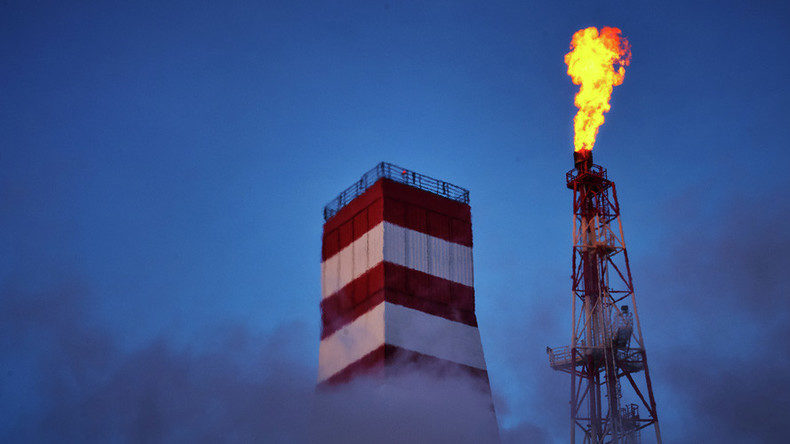OPEC and its future

OPEC’s obituary has been written many times since its inception in 1960, but the cartel always finds a way to set aside internal disputes in the name of maintaining higher oil revenues and geopolitical clout. But OPEC’s future is more tenuous today than ever. More evidence of this begins to show by the day, most recently with the cartel’s decision to postpone its April ministerial meeting until June.
The hope is that OPEC and partner Russia will be able to get a better read on oil markets by that time and know how to manage supplies in the second half of the year. But another truth is that the OPEC-Russia alliance is reaching a critical inflection point.
A couple of extra months won’t help answer the structural and existential questions facing OPEC in the long-term, including how long can its partnership with Russia last and how much further is it willing to let market share fall to accommodate ever-rising U.S. oil production?
The two questions intertwine. Russia, whose relations with the United States are at their worst since the collapse of the Soviet Union, is tiring of the supply cut arrangement with OPEC. Igor Sechin, CEO of Russian state oil giant Rosneft — and a close friend of Vladimir Putin — has stated it plainly, while Russia’s weak compliance with the current OPEC deal provides further evidence.
Russia and Saudi Arabia – but mostly Riyadh – are doing the heavy lifting in the current deal that is keeping 1.2 million barrels a day off global oil markets, a move that has lifted the price of benchmark Brent crude from below $50 a barrel in late December to around $68 today.
The Saudi-Russia partnership in oil supply management has been very successful since its beginning in late 2016. That’s surprising given the fact that they have been on opposing sides of almost every conflict affecting the Middle East.
Smaller OPEC members have increasingly felt marginalized, having watched Riyadh and Moscow make decisions for the entire cartel since late 2016. Qatar, an OPEC member since 1961, exited the group late last year. Many analysts believe Iraq, OPEC’s number two producer and another notorious cheater on quotas, could be next.
It has been nearly five years since OPEC lost a price war to U.S. producers, but shale continues to vex and confound the cartel. OPEC continues to believe a slowdown in U.S. output and recovery for the cartel’s shrinking market share is right around the corner. But against all the odds – pipeline and coastal export restraints, capital discipline and investor pressures – shale keeps growing, overwhelming OPEC planners.
U.S. shale companies expect to deliver 15% growth in oil production in 2019 over 2018. At the same time, operators say they will cut capital spending by 5% this year. Over the past year, US producers have added a volume equivalent to the entire output of OPEC’s Nigeria, with output surpassing 12 million barrels a day and exports and exports averaging more than 3 million barrels a day for the past three weeks.
The prevailing thought had been that shale would slow significantly in the coming five years, but that forecast seems less certain now, particularly as major oil companies increasingly optimize the operation and rely on the resource to drive growth across their entire global portfolios. Consultant Rystad Energy says the US is on track to produce more crude oil and liquids than Russia and Saudi Arabia put together by 2025. It sees US liquids output surpassing 24 million barrels a day over the next six years, assuming average US crude prices of $58.
Meanwhile, OPEC keeps plodding along, producing around 30 million barrels a day – still nearly a third of the global market, but a market that increasingly demands less of its oil as non-OPEC continues to ramp up. And growth in global oil demand won’t always be as robust as it has been in recent years as the low-carbon energy transition plays out — that means the entire pie will shrink over time.
Something is bound to give. The OPEC-Russia coalition has done well to manage oil supply for this long, but it’s hard to see the status quo holding for another two or more years. Complicating matters further, the US can make room for its oil in global markets by attacking OPEC members Iran and Venezuela with harsh sanctions. The same applies to Russia, whose long-term output capacity has been targeted by Washington through sanctions since its annexation of Crimea in 2014. With US-Russia relations at a post-Soviet low, Congress is now looking to tighten the noose on Moscow further this year with new sanctions legislation.
Congress is also weighing a bill — the No Oil Producing and Exporting Cartels (NOPEC) Act – which aims to allow the US to sue OPEC for infringing anti-trust laws in the oil market. The legislation has far to go, but it has spooked OPEC members, particularly given President Trump’s frequent criticism of the cartel on Twitter.
The irony is that the United States has benefited from OPEC actions more than any other oil producing nation over the past five years. Given that US oil is far more expensive to extract than Saudi Arabia’s extensive conventional reserves, it would be wise for America do everything to keep the cartel together and preserve the status quo.
But it may be too late. Reports surfaced late last year that the King Abdullah Petroleum Studies and Research Center, a think tank based in Riyadh, was conducting a study on what it would say if OPEC dissolved, what it would mean to global oil markets and Saudi Arabia’s role in those markets. It’s understandable why Riyadh would commission such a study.

